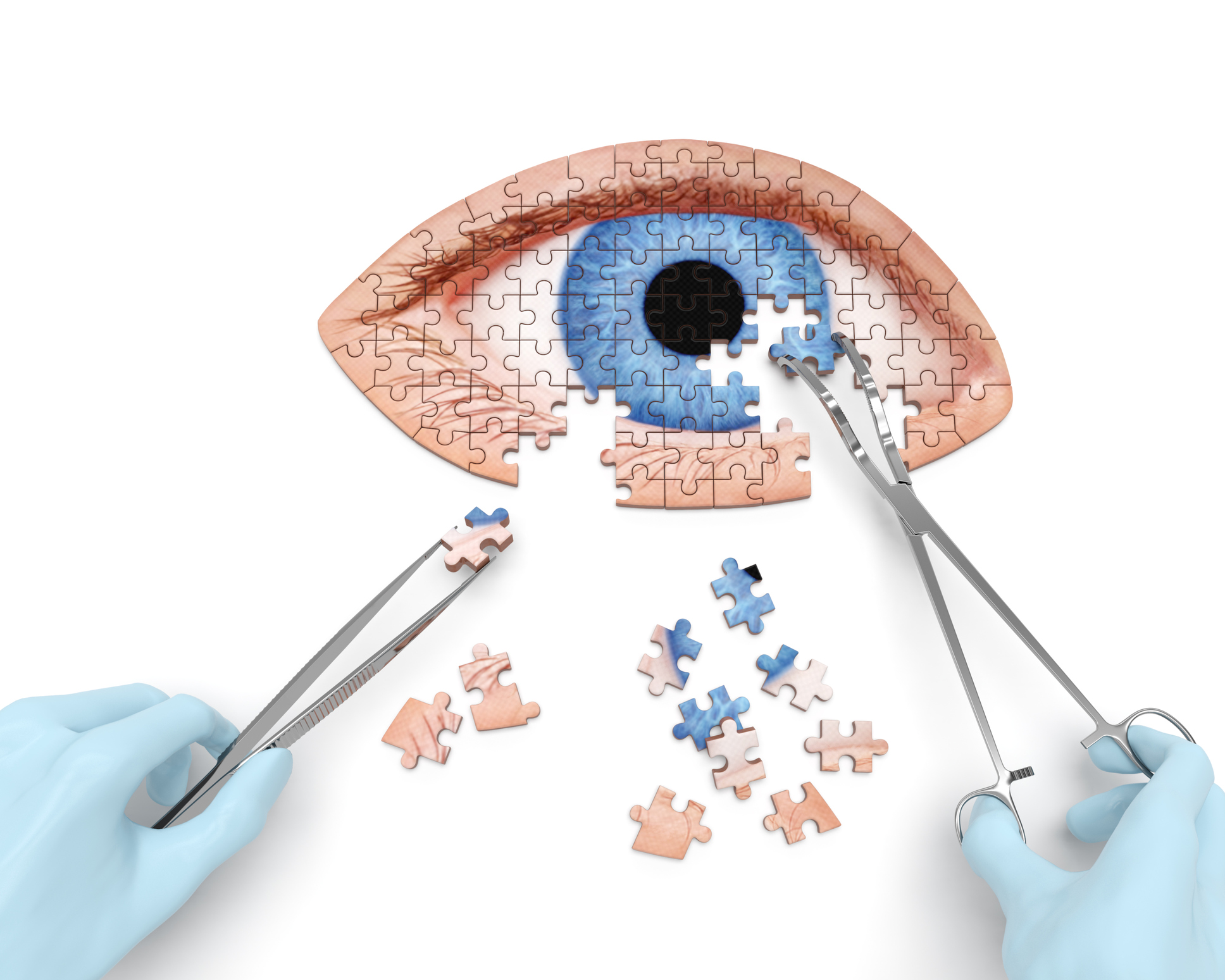What is a cataract?
When the normally clear lens within your eye becomes cloudy and opaque, it is called a cataract. Cataracts vary from extremely small areas of cloudiness to large opaque areas that cause a noticeable blurring of vision. Cataracts develop without pain or redness. However, some indications that a cataract may be forming include:
• Blurred or hazy vision that cannot be corrected by changing the glasses prescription.
• The feeling of having a film over the eyes that does not go away with blinking.
• A temporary change in distance and/or near vision.
• An increased sensitivity to glare, especially at night.
Who gets cataracts?
Cataracts are a function of aging and are most often found in people over the age of 60, although they are also occasionally found in younger people, including newborns. If a child is born with a cataract, it is referred to as a congenital cataract.
What causes cataracts?
Cataracts are the result of aging changes that occur within your eyes that cause the lenses to become cloudy. This may be due to advancing age or it may be the result of heredity, an injury or a disease. Excessive exposure to ultraviolet radiation (present in sunlight), cigarette smoke, certain systemic conditions, trauma or the use of certain medications are also risk factors for the development of cataracts. Cataracts usually develop in both eyes (except in the case of trauma to one eye), but often at different rates.
Can cataracts be prevented?
Currently, there is no proven method to prevent cataracts from forming. Wearing sunglasses is a tremendous benefit as they protect your lens from harmful UV rays, which can speed up cataract formation. A diet rich in antioxidants (such as Vitamins A, C, E, Zinc Selenium & Magnesium) can also be beneficial.
What are the signs/symptoms of cataracts?
Some indications that a cataract may be forming include blurred or hazy vision that cannot be corrected by changing the glasses prescription, or the feeling of having a film over the eyes that does not go away with blinking. A temporary change in distance and/or near glasses may also occur. An increased sensitivity to glare, especially at night may be experienced. Cataracts develop without pain or redness.
How are cataracts diagnosed?
A comprehensive eye examination by an optometrist can determine if you have a cataract forming.
How are cataracts treated?
In the early stages of a cataract, where vision is only minimally affected, your optometrist can sometimes prescribe new lenses for your glasses to give you the sharpest vision possible. The treatment for a cataract that is interfering with vision, is surgery. When the cataracts start to interfere with your daily activities and glasses cannot improve this vision, your optometrist will refer you to an ophthalmologist (eye surgeon) who may recommend the surgical removal of the cataracts.
When will I need to have cataracts removed?
Cataracts may develop slowly over many years or they may form rapidly in a matter of months. Some cataracts never progress to the point that they need to be removed. When a change in glasses can no longer provide functional vision, and the cataract is starting to interfere with your daily activities, your optometrist will arrange a consultation with a cataract surgeon.
What is cataract surgery?
Cataract surgery is a safe and effective procedure to remove the cloudy crystalline lens from the eye and replace it with a clear implant. With improved technology, options now exist when it comes to selecting the proper lens implant for your eyes. However, there are risks and limitations that require a discussion with an optometrist or ophthalmologist before the procedure.
During cataract surgery, the cloudy lens in the eye is removed and a clear plastic artificial lens is inserted in its place. Sometimes the lens implant can give sufficient distance vision that you may not need glasses for driving or watching TV.
Recently, multifocal artificial lens implants have been used in cataract surgery to reduce the need for reading glasses after the operation. If glasses are still needed after surgery, your optometrist will prescribe new lenses about four weeks after surgery to maximize your distance and near vision.
What happens after cataract surgery?
Cataract surgery is a very safe and effective procedure to remove the cloudy crystalline lens from the eye and replace it with a clear implant. However, there are risks and limitations that need to be discussed with an optometrist. The old cloudy lens is removed and an intraocular lens implant (IOL) is inserted in your eye at the time of surgery, which serves as a new lens. Before surgery, your optometrist may recommend lens implant options with new “specialized” intraocular lenses designed to minimize your need for glasses following the surgery. Sometimes the lens implant can give you good enough distance vision that you may not require glasses. Your near vision will still be blurred, so you may need glasses to read. Your optometrist will prescribe new lenses for your glasses about four to six weeks after surgery to maximize your distance and near vision.
How can an optometrist help?
As you age, you become more susceptible to changes in vision and eye health issues. The Ontario Association of Optometrists recommends that every senior receive an eye exam once a year, to detect any problems with vision and eye health before they impact your life. Optometrists will treat and manage any vision problems, eye diseases and conditions to make sure you are able to continue living a safe, independent and active lifestyle. To find an optometrist near you, visit findaneyedoctor.ca.
This article comes courtesy of the Ontario Association of Optometrists (optom.on.ca).






Add Your Voice
0 Comments
Join the Discussion